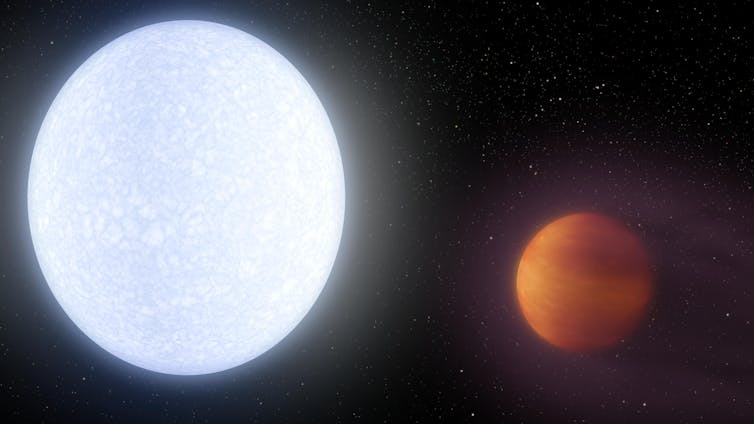Global Warming Gone Mad!
Very little to do with geology, very little to do with the Earth but still very interesting!
THIS ARTICLE tell of the hottest planet ever found - Kelt-9 b. So hot that metals, in vapour form, are in the atmosphere!
To get a planet that hot, start with a gas giant and move it, probably by collisions, into an orbit around its star much closer than that of Mercury round our Sun. It helps if the star is twice as hot as the Sun. And you get temperatures of 5,000°K.
The data which led to these conclusions came from the Hubble Space Telescope and is publicly available. Two methods of finding the composition of the atmosphere were used. In the transit method the light of the star passing through the planets atmosphere is used. In the eclipse method when the planet goes behind its star, its (very small) contribution to the total light is removed and its light contribution can be determined. I suspect some this process is a bit beyond my powers!
The authors look forward to the launch of other space telescopes - NASA's James Webb Space Telescope and the European Space Agency's Ariel Space Mission - which will be able to extend the study of exoplanets.

No comments:
Post a Comment